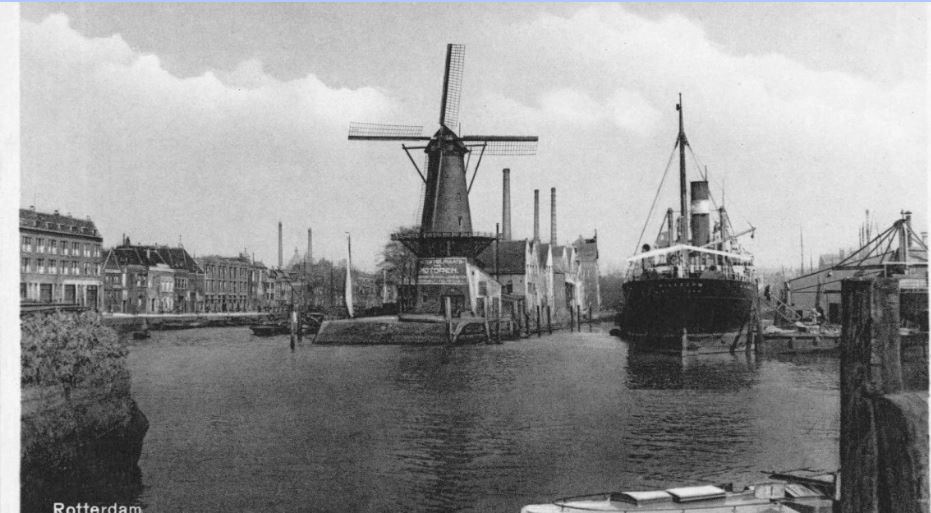The US-China trade war has led to growth in economic activity in some ‘winner’ countries, which have gained from relocated US-bound production and also increased exports to the rest of the world. This column presents evidence that relocated production for the US market has, in some cases, retained ‘Chinese characteristics’ through Chinese listed firms’ foreign manufacturing affiliates and Chinese exports of parts used for US-bound products. As US tariffs expand to a much broader set of countries, it seems probable that firms will consider new investment destinations, and new directions of trade, that will not always be those anticipated by the initial policy.
The trade war went global on ‘Liberation Day’, as the US set new tariffs on imports from countries around the world. What are the likely implications for global supply chains? These produce a wide range of products for US firms and consumers, through cross-country efforts combining far-flung capital and expertise. So, if participating countries now face steep new barriers to the US market, what changes can we expect?
One possibility might be that production of goods for the US market will return to the US itself. This certainly appears to be a key goal of the US government (Bredemeier 2025). But supply chains involve many complex economic interactions, and it is far from clear that the outcome will be this simple. So, for an idea of what else might happen, it may be useful to look to recent experience.
Over the last several years, the economic relationship between China and the US has been buffeted by tariffs and political uncertainty. This has coincided with a decline in the importance of products from China in US imports. Figure 1 shows that the share of Chinese goods in total US import value has fallen steeply in recent years. When we adjust for the changing composition of US demand in Figure 2 – such as the boom in electronics purchases in the early stages of the pandemic – substitution away from China becomes even more clear.
Figure 1


Notes: The figure displays the share of Chinese goods (by value) in the imports of the US and the rest of the world (ROW), annually from 2012 to 2022. ‘ROW imports’ are the total imports of the 124 countries (other than the US and China) for which import data is available for all of these years. Data is from UN Comtrade.
Figure 2


Notes: The figure displays a weighted average of the product-level shares of Chinese goods (by value) in the imports of the US and the rest of the world (ROW), annually from 2012 to 2022. The weights are the share of each product in the total imports of the US or ROW as of the initial year (2012). Data is from UN Comtrade.
There is now ample evidence that the US-China trade war has led to growth in economic activity in a varied set of ‘winner’ countries. Careful studies of the economies of Mexico (Utar et al. 2023a, 2023b) and Vietnam (Mayr-Dorn et al. 2023, Ngoc and Wie 2023a, 2023b, Rotunno et al. 2023) indicate that US tariffs on China have benefited local firms and workers through increased production for the US market. Fajgelbaum et al. (2023, 2024) argue that these and other countries have not only gained from relocated US-bound production, but also translated this growth into increases in exports to the rest of the world.
On the surface, this looks like a process of ‘decoupling’: China’s links with the US are declining, and other countries are filling the gap. But these findings do not necessarily imply that Chinese economic actors are no longer involved in relocated production processes. Freund et al. (2023, 2024) and Gopinath et al. (2025) have pointed out that, among countries whose US market share has risen, imports from China have also increased in the same industries or product categories as these countries’ export gains to the US. At the same time, Chinese investment in these countries has also grown, as observed by Alfaro and Chor (2023a, 2023b) and Gopinath et al. (2025).
In a recent paper (Garred and Yuan 2025), we take a closer look at each of these phenomena. Our study uses disaggregate data from a variety of sources to show new evidence that relocated production for the US market has, in some cases, retained ‘Chinese characteristics’.
First, we consider whether some of this relocation activity has involved capital from China itself. To do this, we take advantage of the fact that firms listed on Chinese stock markets are required to disclose their foreign affiliates in their annual reports. Since these reports also include the business scope of each affiliate, we can distinguish manufacturing affiliates from foreign outposts engaging in other activities such as local sales.
An initial look at this data shows that the top recent ‘winners’ of greater US market share have also hosted a rising proportion of Chinese listed firms’ foreign manufacturing affiliates. In Figure 3, we display trends for the ten countries with the largest increases in share of total US imports between 2018 (when we observe the trend break in Figure 2) and 2022. As shown by the dashed line, these countries had already seen a gradual rise in US import share by 2018, but made faster gains afterwards.
At the same time, the solid line indicates a corresponding trend among foreign affiliates of Chinese listed firms. For each firm, we consider the location of each affiliate whose business scope encompasses manufacturing production, excluding affiliates based in the US. A sharply rising proportion of these manufacturing affiliates are located in the ten biggest ‘winners’ of US market share.
Figure 3


Notes: The figure is based on the ten countries with the largest increases in share of total US import value between 2018 and 2022: Vietnam, Taiwan, Canada, Korea, Thailand, India, Indonesia, Mexico, Ireland and Cambodia. The dashed line represents these countries’ share of total US import value annually. The solid line depicts the share of the (non-US) foreign manufacturing affiliates of listed Chinese firms that is located in these countries. Data is from UN Comtrade and the China Stock Market and Accounting Research (CSMAR) database.
This relationship stands up to closer scrutiny at the product level. Using Chinese customs data, we identify the goods exported by each listed Chinese firm to the US before the steep decline in direct trade visible in Figure 2. We then consider whether firms have subsequently opened more new manufacturing affiliates in countries that have experienced larger rises in US import share for these specific goods. Rather than making cross-country comparisons in this exercise, we control for country-level trends, so that we consider only differences in growth across products for each ‘third country’. We find a strong positive correspondence between Chinese firms’ manufacturing investments and the US import growth of their destinations.
The second key fact demonstrated by our study relates to the continuing presence of Chinese value added in relocated production. In this part of our paper, we check whether Chinese exports of parts have increasingly flowed to countries gaining US import share in the specific types of goods that use those parts.
This is made possible by a feature of the Harmonized System (HS) classification of traded products. For a broad range of goods, the HS classification separately identifies parts and the corresponding downstream products. For example, we are not only able to track flows of vacuum cleaners from one country to another, but also trade in ‘parts of vacuum cleaners’. Conveniently, this is possible for 153 different goods categories, accounting for approximately half of the total value of US imports.
In Figure 4, we reproduce the dotted line from the previous figure, but now plot this alongside a trend in the international trade of Chinese-made parts. More specifically, the solid line represents the annual share of China’s parts exports flowing to the top ten ‘winner’ countries defined above, on average across the 153 goods categories in our dataset. It is apparent that this has risen in parallel with these countries’ gains in US market share.
Figure 4


Notes: The figure is based on the top ten ‘winner’ countries as defined for Figure 3. The dashed line is reproduced from Figure 3. The solid line depicts these countries’ share of Chinese parts exports (by value), on average across 153 categories of goods where parts are distinguished from their downstream uses in the HS product classification. Data is from UN Comtrade and the China Stock Market and Accounting Research (CSMAR) database.
When we take full advantage of our dataset by linking upstream and downstream trade flows in specific product categories, we reach similar conclusions. To do this, we calculate the change in the share of each ‘third country’ in Chinese exports of parts, for each particular goods category. We also calculate the contemporaneous change in the share of the same country in US imports, for the downstream products specific to those parts. Regressions relating these two variables yield a strong positive estimated relationship.
We interpret our findings as showing evidence of new indirect ties between China and the US, even as their direct links appear to decline. The wider implication of our analysis is that political and economic tensions, such as those experienced by China and the US in recent years, may reshape international economic relations in myriad ways. Given the complexity of today’s global economy, with its numerous links between countries via trade and investment flows, this is perhaps unsurprising.
So, what should be expected as US tariffs expand to a much broader set of countries? The outcome is unlikely to be straightforward. Instead, it seems more probable that firms will consider new investment destinations, and new directions of trade, that will not always be those anticipated by the initial policy.
Source : VOXeu





